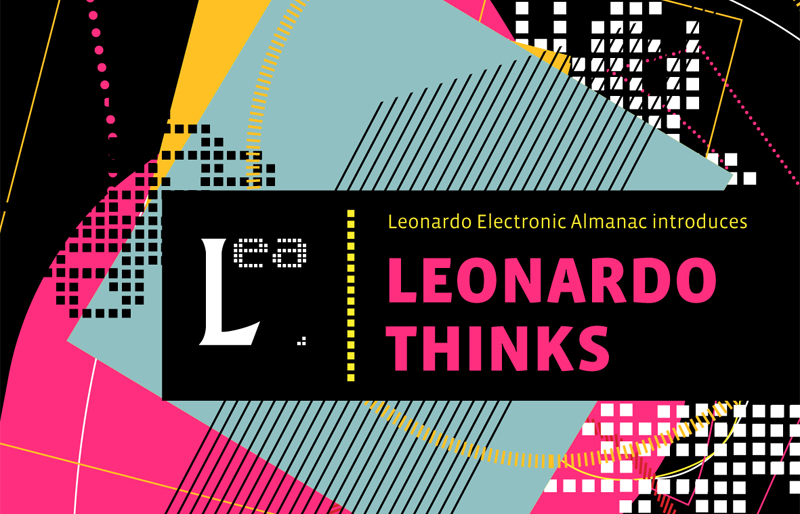
LEONARDO THINKS 1968 – 2011
Contemporary Opinion by Louise Poissant
Louise Poissant comments on the Dictionary of New Media Arts project. She notes that it allowed us first to observe the passage from tools and machines to interfaces and then gradually to witness the shift from the instrumental register to the more global paradigm of media ecology
The Encyclopedia of New Media Arts
The Dictionary of New Media Arts project [1] was a mapping and description of technologies used in art that allowed us first to observe the passage from tools and machines to interfaces and then gradually to witness the shift from the instrumental register to the more global paradigm of media ecology. Technologies are no longer reduced to tools of environmental transformation: they have become the very environment. They determine our sensory apparatus and our exchanges with the environment and with others—in short, our way of being. The continual inscription of new technologies and new aesthetic approaches, combined with the documentation and archiving of processes that have marked the history of new media arts, have led to a larger project: the Encyclopedia of New Media Arts. Artists and theorists of the international community are invited to submit new terms, definitions, historical notes, comments and visual and sound documents to this project, which will thus become a record, inspiration and guide for emerging practices.
In this sense, the Encyclopedia becomes a project of community networking via creation of collaborative links, exchanges and pooling in the field. The Internet represents both a space and a platform perfectly adapted to the dimensions of the project. The information is universally accessible on-line, and it is very easy to get involved as a consultant, in both senses of the term: as user and as expert. One of the guiding principles of community networking applies precisely: The competence, knowledge and know-how of an individual may belong to him or her but do not generate value in isolation. To create value, it is necessary to combine human capital, knowledge capital and network innovation capital. The Encyclopedia is meant to become just such a network.
Combining text, sound and image, the multimedia dimension of the Encyclopedia allows escape from the circularity in which a dictionary is enclosed, where every cross-reference is done word to word. The possibility of connecting to artworks, graphic illustrations and interviews prompts a continuous dialogue between words and things. To name, describe, illustrate, measure, exemplify, compare, distinguish and translate are operations that answer and challenge each other, providing the opportunity to update and improve consensual definitions, while at the same time facilitating exchanges between these definitions and exemplifying artworks.
The interpenetration of tools and theory seen in the sciences is echoed in the arts, where practice, vocabulary and sensibility are gradually being transformed by the integration of technological devices and elements. New media arts seem naturally intended for all kinds of interbreeding. It is expected that they will be practiced less and less in isolation. This tendency to interbreed validates the establishment of the media ecology paradigm because it supports the interactions and the exchanges between the various elements, which are woven, merged and lost in one another.
Endnotes
[1] First published in French in 1996, the Dictionary of New Media Arts. It has been on-line since 1997 and was published in part as a series of nine articles in Leonardo (from Leonardo 33, No. 2 [2000] to Leonardo 36, No. 3 [2003]). The Dictionary and the Encyclopedia were developed by the Groupe de recherche en arts médiatiques (GRAM).
Louise Poissant is Dean of the Faculty Arts at the University of Quebec at Montreal (UQAM), a professor of aesthetics and theory at the École des arts visuels et médiatiques at UQAM and leads the Groupe de recherche en arts médiatiques (GRAM).
ISSN No: 1071-4391
Author: Louise Poissant, Leonardo Editorial Advisor, E-mail: poissant.louise@uqam.ca
École des arts visuels et médiatiques Université du Québec à Montréal Originally published in: Leonardo June 2006, Vol. 39, No. 3: 180–180
Print: ISSN 0024-094X, Online: ISSN 1530-9282,
DOI: http://www.mitpressjournals.org/doi/pdf/10.1162/leon.2006.39.3.180
Leonardo is a registered trademark of the ISAST.
